When it comes to golf fitness, trends come and go, but the fundamentals always remain. Squats, hinges, pushes, pulls, and rotational movements have been staples of athletic training for generations—and for good reason. These exercises build a balanced, powerful, and resilient body that not only enhances your swing but also keeps you strong for everyday life.
If you're already hitting the gym to improve your golf game, it’s time to focus on the essentials. These five foundational exercises are the backbone of any effective golf fitness program. Here’s why they work and how they translate to better performance both on and off the course.
1. Squat
The squat is the ultimate lower body exercise. It builds strength and stability in the quads, glutes, hamstrings, and core—all crucial for generating power in your golf swing.
-
In the Gym: Squats enhance lower body strength, improve mobility, and train your core to stabilize under load.
-
In Life: Strong legs make everyday activities like climbing stairs, lifting, and walking easier and more efficient.
-
For Your Swing: Squats develop the lower body stability needed for a smooth weight transfer, powerful downswing, and consistent ball striking. Better ground force through your legs translates to higher clubhead speeds and longer drives.
2. Hinge/Deadlift
The deadlift is a hinge movement that targets the posterior chain—glutes, hamstrings, and lower back. This exercise is a game-changer for building explosive power.
-
In the Gym: Deadlifts strengthen the posterior chain, improve hip mobility, and teach you to maintain a neutral spine under load.
-
In Life: A strong posterior chain reduces back pain and helps with daily movements like bending, lifting, or carrying heavy objects.
-
For Your Swing: A powerful hinge position supports proper posture at address and reduces early extension during your swing. By strengthening the muscles that drive rotation, deadlifts contribute to better follow-through and faster swing speeds.
3. Upper Body Push
Push exercises, like push-ups, bench presses, or overhead presses, target the chest, shoulders, and triceps. These muscles are essential for club control and swing stability.
-
In the Gym: Pushing movements build upper body strength and stability, ensuring you can maintain posture and power through a full round of golf.
-
In Life: Stronger pushing muscles make tasks like carrying groceries or pushing a heavy door easier.
-
For Your Swing: Push exercises improve your ability to control the club at impact. They enhance upper body stability, ensuring consistent strikes even late in the round when fatigue sets in.
4. Upper Body Pull
Pulling exercises, such as rows, pull-ups, or face pulls, work the muscles of the upper back, shoulders, and arms. These exercises balance out pushing movements and are critical for shoulder health.
-
In the Gym: Pulls build strength in the lats, traps, and rhomboids, promoting better posture and shoulder stability.
-
In Life: A strong back helps you maintain good posture throughout the day and prevents injuries from repetitive tasks.
-
For Your Swing: Pulling exercises strengthen the muscles that control the backswing and generate power in the downswing. They also support a proper setup position, reducing the risk of hunching over the ball.
5. Rotate
Rotational movements, like medicine ball throws, cable twists, or rotational slams, are as golf-specific as it gets. These exercises mimic the rotational power needed for your swing.
-
In the Gym: Rotation exercises strengthen the obliques, core, and hips while improving mobility and stability.
-
In Life: A strong, stable core protects your spine and helps you perform twisting motions, like reaching or throwing, with ease.
-
For Your Swing: Rotational training enhances your ability to generate speed and power, leading to longer drives and more precise control. It also increases core stability, preventing energy leaks during your swing.
Why the Basics Work
These five exercises are timeless because they address the fundamental movement patterns every athlete needs—strengthening the body as a cohesive unit. For golfers, they not only build the physical foundation for an efficient swing but also help prevent injuries, improve endurance, and enhance overall performance.
Accessory exercises have their place too, but always prioritize the basics, and you’ll develop the strength, stability, and mobility required to take your golf game to the next level.








